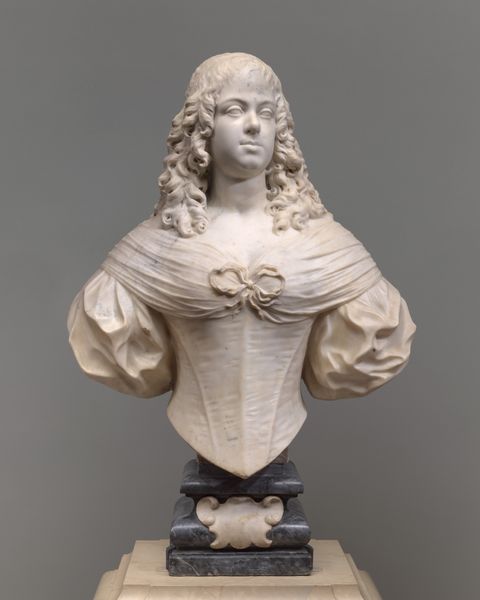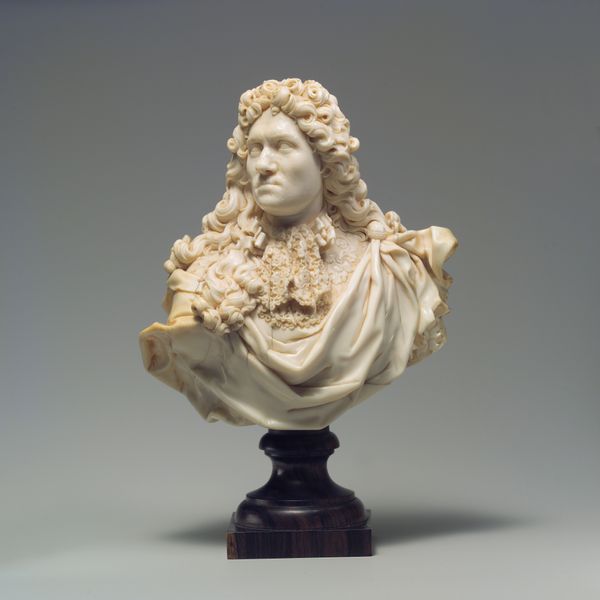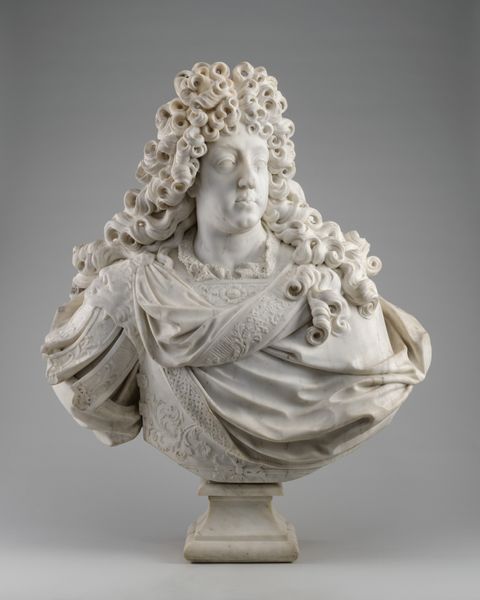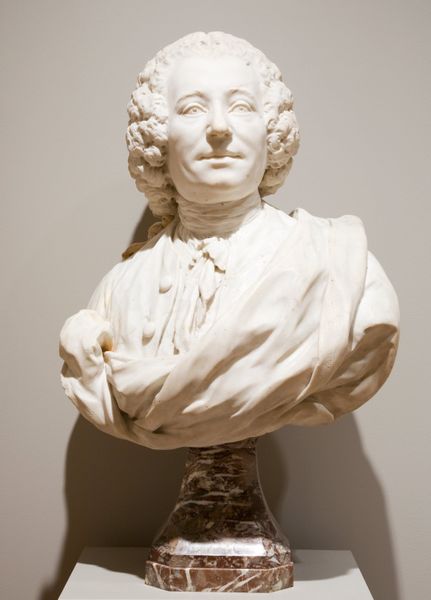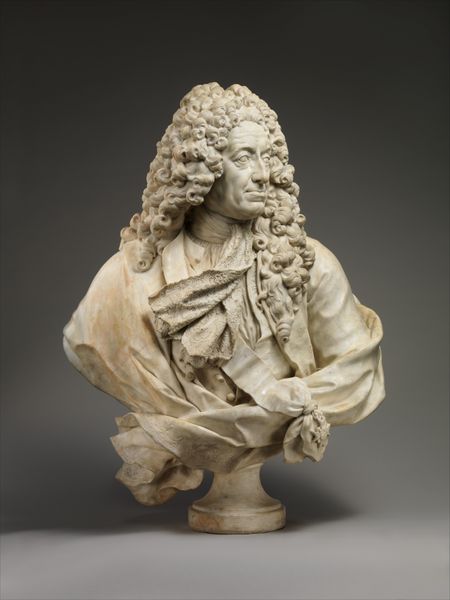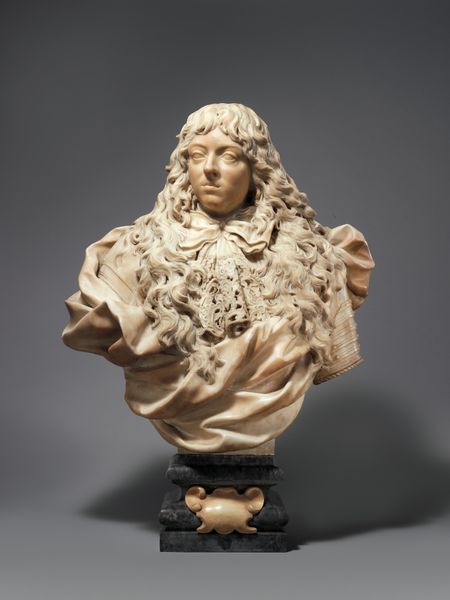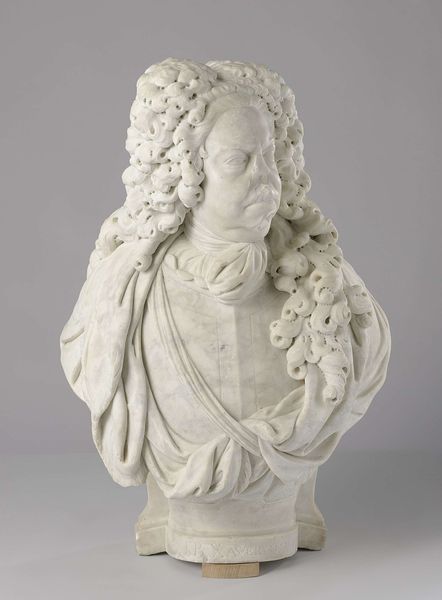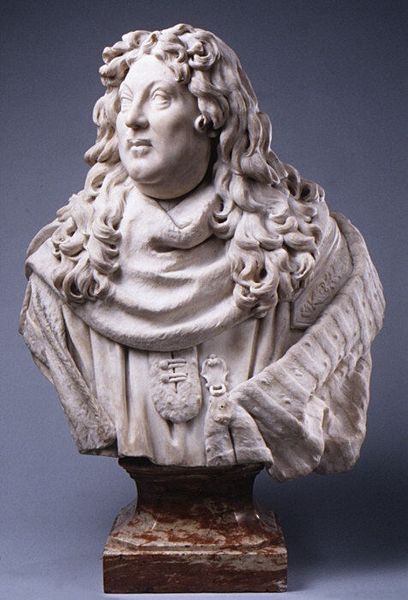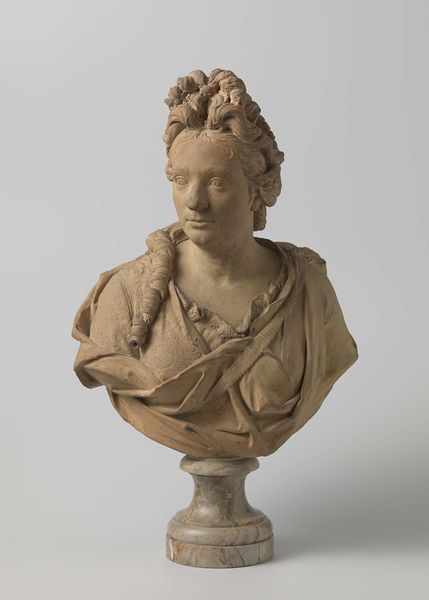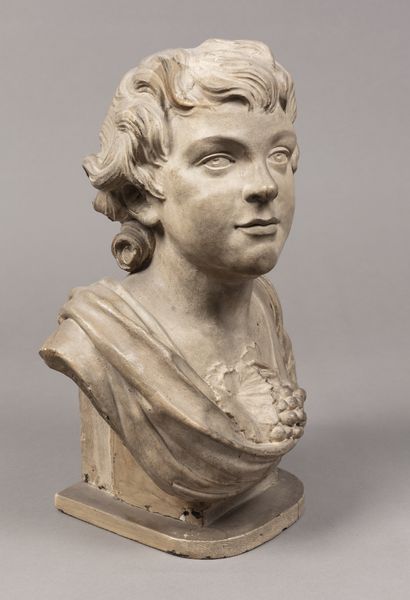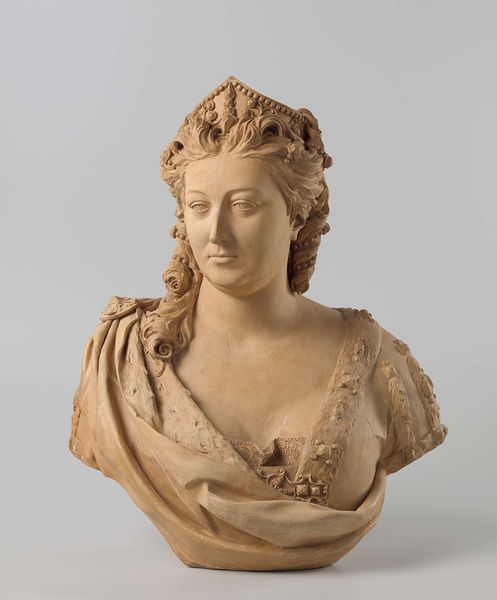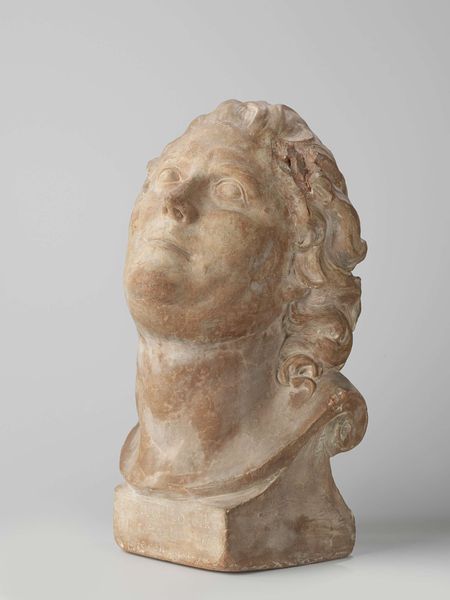
sculpture, marble
#
portrait
#
baroque
#
sculpture
#
classical-realism
#
sculpture
#
decorative-art
#
marble
Dimensions: Bust, wt. confirmed: 26 × 23 1/2 × 11 in., 192 lb. (66 × 59.7 × 27.9 cm, 87.1 kg) Pedestal with socle, wt. confirmed: 59 × 17 1/4 × 13 1/2 in., 677 lb. (149.9 × 43.8 × 34.3 cm, 307.1 kg) Height (Total): 85 in. (215.9 cm) Height (socle): 8 3/4 in. (22.2 cm) Length (Length of socle pin): 2 3/4 in. (7 cm)
Copyright: Public Domain
Curator: Before us stands a marble bust crafted in 1684 by Christophe Veyrier. It portrays Marquis Jean Deydé. Editor: It has a distinctly imperious air, doesn’t it? Cold, classical…that hair! So meticulously curled, yet somehow... restrained? The textures contrast incredibly with the coolness of the marble. Curator: Restraint is an interesting word choice. Consider the material—marble, always quarried and worked. Veyrier was part of the artistic circles in Marseilles; his ability to capture the likeness and status of someone like Marquis Jean Deydé, undoubtedly a patron, provided a comfortable living. Notice, too, how the drapery of the shoulders emphasizes wealth and status as much as warmth or practicality. Editor: I'm captivated by that fur stole... or perhaps ermine? The details seem to vibrate with symbolic power. The ermine, throughout history, became linked with purity and moral strength. This isn't just a depiction of a nobleman; it's a deliberate statement about his character, or rather, the character he wished to project. Is that the key message to convey? Curator: Quite possibly. The artistic production, however, required very specific types of tools, workshops, and social access. And marble itself had trade implications across geographic and political territories. So many hands would have touched this bust. It isn't only about projecting character; it’s about a network of skilled craftsmanship supporting an economic class and then imbuing the class and subject with specific symbolism. Editor: Agreed. The very medium enhances this sense of authority and permanence. It speaks volumes about the enduring nature of power and memory... Or, perhaps, the desire for enduring power and memory. Curator: Precisely. Thinking about where Veyrier’s studio sat in the context of other craft guilds reveals how integral art was to economics in that period. Editor: Absolutely, I was too quick to rush to symbol without placing the production first! I see that. This is so much more than just an image; it is material, social, political—and quite literally—monumental. Curator: Indeed, an evocative example of artistic craftsmanship. Editor: I find my understanding deeply enriched.
Comments
No comments
Be the first to comment and join the conversation on the ultimate creative platform.
